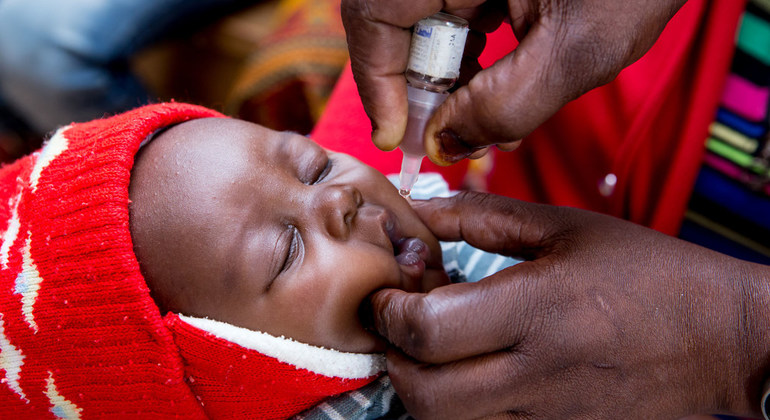The deadly viral disease is “very close” to disappearing altogether, with the number of affected children having dropped by 99 per cent since 1988, the UN Children’s Fund (UNICEF) announced on World Polio Day, marked each 24 October, positioning the world closer than ever to its total eradication.
The number of recorded cases has fallen from 350,000 in 1988, to less than 40 today, and from a presence in 125 countries, to just two.
Afghanistan and Pakistan are the two remaining countries with reported cases, with Nigeria, a third polio-endemic country, having gone three years without a reported infection, placing it on track to be certified polio-free by 2020.
“Following the eradication of smallpox and wild poliovirus type two, this news represents a historic achievement for humanity”, WHO said, with only type one of the virus remaining.
18 million would have been paralyzed
All three strains are symptomatically identical, WHO explains, causing irreversible paralysis, and in cases when muscles become immobilized, the disease leads to death. Early on, other signs may include fever, fatigue, and stiffness in the neck and limbs, though most infected people (90 per cent) have very mild, or no symptoms at all.
Thanks to disease control efforts, including the Global Polio Eradication Initiative (GPEI), comprised of WHO, UNICEF and other health partners, 18 million people are currently walking, who otherwise would have been paralyzed by the virus.
In addition, milestone polio eradication work has saved the world more than $27 billion in health costs in the last 30 years, with potential to generate $14 billion in cumulative cost savings by 2050, when compared to costs incurred in controlling the virus indefinitely.
Beyond Thursday’s milestone, eradication “will send a strong message” regarding the power of vaccines at a time when public trust has been undermined, WHO has said.
As the world faces a spread of misinformation over vaccine safety, eliminating polio will provide “irrefutable evidence” that they work.
UNICEF has stressed that seeing polio disappear means every child, in every household must continue to be vaccinated. The agency has managed to distribute over one billion doses annually, but thousands of children are still missing out.
Vulnerable children live in remote areas or in conflict-affected communities, making access a challenge. Marginalized and underserved communities, already lacking basic resources like water and health care, sometimes only received care through targeted polio vaccination campaigns.
UNICEF continues to lead efforts to increase acceptance and demand for the vaccine through community dialogue, trust-building and evidence-based communication on the effectiveness of the immunization.


